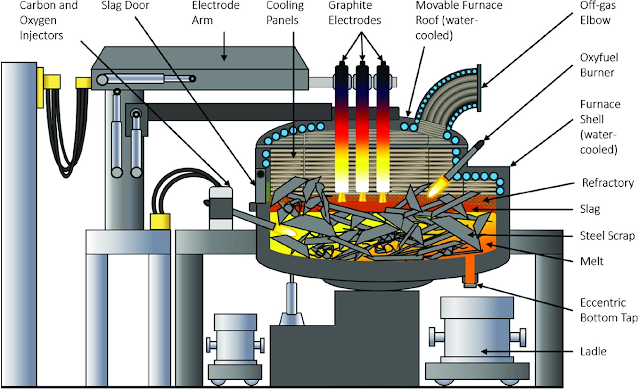What is Secondary Refining Technology?
Furnace secondary refining technology refers to metallurgical technology that improves the physical and chemical properties of molten steel in a more economical and effective way on the basis of the production of molten steel in smelting furnaces (converters, electric furnaces). include:
(1) In the ladle, the temperature, composition, gas, harmful elements and inclusions of the molten steel are further adjusted and purified to achieve the purpose of being clean, uniform and stable.
(2) Promote gas and inclusion floating in the tundish to stabilize the molten steel temperature during the full casting process (also known as tundish metallurgy).
(3) Removing inclusions in the steel in the crystallizer to promote nucleation and uniform crystallization.
Technology for Secondary Refining:
(1) Use gas permeable bricks or insert a spray gun for gas agitation, or use electromagnetic stirring.
(2) Adding alloying elements, deoxidizers, and slag modifiers through the transfer system.
(3) A solid material including an alloy is sprayed through a spray gun.
(4) Feed the alloy wire into the ladle.
(5) Various vacuum degassing techniques.
(6) Heating the molten steel in a ladle furnace.
(7) Protection technology for steel flow.
Furnace secondary refining is divided into two categories: vacuum and non-vacuum. Slag washing and argon blowing are the simplest vacuum refining methods. LF refining is the most commonly used non-vacuum refining method. Vacuum processing is the most suitable means of high-quality steel refining. RH and VD are the most commonly used. Among the different steelmaking vacuum treatment technologies, AOD and VOD are common non-vacuum and vacuum refining methods for smelting stainless steel.
More News You May Interesting:
The Development Trends and Advantages of Electric Arc Furnaces
The Advantage and Disadvantage of Electric Arc Furnace and Induction Furnace
The Advantage of Induction Furnace (Medium Frequency Furnace)
Continuous Casting Machine Equipment





.jpg)








没有评论:
发表评论